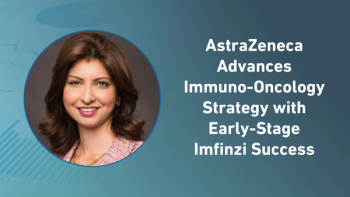
ePRO Supports Patients, Clinicians, Regulators, and Industry in Oncology
PRO and ePRO systems provide significant insight into what happens to patients with cancer as they experience the disease and undergo treatment. The data they collect can measure treatment side effects, drug effects, patients’ symptoms and functioning, quality of life, compliance with regimens, and toxicity endurance. The data also enable real time monitoring of adverse effects, whether or not standards for such effects have been established.
ePRO methods help capture measures of emotional distress in ways that preserve privacy and allow patients to reveal their feelings without concern for the potential impact their affliction may have on their medical team, family, or caretakers. Thus, the ePRO solutions can improve communication between patients and doctors, help monitor progression of the disease, and provide trending information revealing any response to treatment. Such data helps with predicting clinical endpoints such as hospitalization.
This article describes how ePRO technology serves oncology trials.
In oncology as in other areas, ePRO has two major advantages over paper-based systems:
1. Data are attributable and time-stamped.
2. Data are available in real time.
Both advantages benefit physicians, trial teams, researchers, and scientific reviewers at regulatory authorities.
The unique nature of clinical research in oncology
Because cancer encompasses numerous kinds of malignancies with diverse causes, oncology clinical drug trials vary in intent, scope, protocol, and methodology. Many include training of proxies or caregivers as well as patients. Unlike other therapeutic areas, most oncology trials do not include placebo groups.
Three examples of oncology trials using ePRO technology
- Multiple myeloma, for example, has been one of the more intractable forms of cancer, one for which there is as yet no cure. Various clinical drug trials are underway, employing ePRO to measure efficacy and safety.
One ongoing trial is a 55-location, single-arm, open-label study that began in March 2011 to study the effects of a drug developed to treat multiple myeloma.
The primary endpoint for the study is progression-free survival.
Secondary endpoints include:
1. Safety, as measured by adverse events
2. Overall survival
3. Incidence and duration of response to the drug being tested
4. Response of patients who are given blood or bone marrow transplants
5. Time to a clinically significant progression of the disease
Patients use an eDiary at the clinical site, recording their answers to questionnaires developed by the International Myeloma Working Group and the European Group for Blood and Marrow Transplantation.
A report on ClinicalTrials.gov, a service of the US National Institutes of Health, stated: According to a report, Comprehensive Patient Reported Outcomes (PRO), Management for Oncology Practice published in April 2010, “The use of PRO instruments is part of a general movement toward the idea that the patient, properly queried, is the best source of information about how he or she feels. The goal of using PRO measures is to provide better information to doctors and patients so that the best treatment for patients can be determined.”
Patients in other oncology trials are using ePRO instruments at home. The objective is to reduce cancer patient’s sense of isolation and to capture directly from patients their subjective assessments and reports on behavior and medication use in real time. In some cases patients record their symptoms daily or twice a week.
By having patients record their data on a handheld eDiary, trial managers can access reports and charts of data in real time and closely monitor changes that might indicate concern for patient safety. All the ePRO data can be viewed in an online clinical patient data reporting system. If data were collected on paper diaries, data review and any analyses could not occur until the trial’s conclusion. Such paper trials do not easily accommodate adjustments in treatments, endpoints, or study design.
2. In the United Kingdom, one longitudinal study has shown that over time, patient-reported outcomes facilitated patient/doctor discussion and improved patients’ quality of life. Further details and the sponsor’s name have been withheld for confidentially purposes. However the soft benefit of advancing the patient/doctor relationship has been acknowledged as a benefit of patient reported outcomes:
Opportunities from ePROs at home and at the clinical visit frequently collected may
- Enhance the understanding of cancer burden and implications of interventions,
- Facilitate communication
- Inform decisions
- Improve quality of care1
Clinicians and sponsors anticipate that harvesting PRO information can help advance the care of oncology patients.
3. One two-arm study of a drug developed for opiate-induced constipation (OIC) began in March 2011. The study consists of two 12-week randomized, placebo-controlled efficacy studies with more than 600 patients in each arm.
In this case, the primary objective is to compare the efficacy of the drug treatment for constipation against a placebo. Secondarily, the study is comparing the effects of the drug with the placebo on daily signs and symptoms that are associated with OIC. Patients keep twice-daily eDiaries that record bowel movements as well as any discomfort associated with bowel-related symptoms.
The trial also has several long-term exploratory objectives, which include characterizing the pharmacokinetics of the trial drug and the covariate effect in the targeted disease population as well as collecting and storing DNA for future research into genetic variations that may influence response to the drug.
Oncology questionnaires deployed on ePRO systems include:
- Functional Assessment of Cancer Therapy-Breast (FACT-B)
- Brief pain inventory (short form)
- Chemotherapy Convenience and Satisfaction Questionnaire (CCSQ)
- Functional Assessment of Cancer Therapy-Colorectal (FACT-C)
- EORTC QLQ-C30
- Functional Assessment of Cancer Therapy-Lung (FACT-L)
- EORTC Multiple Myeloma Module (QLQ-MY20)
- The Functional Assessment of Cancer Therapy-Prostate (FACT-P)
- Functional Assessment of Cancer Therapy (FACT-G)
Studies of treatment side effects
Many patients with cancer and other conditions suffer not only from their primary disease but from the side effects from treatment. One of the more troublesome side effects is the previously-mentioned OIC, a frequent result of the use of morphine and other long-term opiates to treat pain. Nearly half of patients taking opiates long term experience OIC.
How ePRO improves oncology studies
Regardless of whether the trial is sponsored by industry; teaching hospitals; associations; or government agencies, collecting the voice of the patient via ePRO systems has proven to deliver sensitive indications of changes in a patient’s condition whether the patients are in a facility or at home. ePRO benefits include:
- The data can help improve palliative care by ensuring that nurses have access to trends in key symptoms such as nausea, pain, constipation, and diarrhea as well as doses of medication.
- Physicians can get a better understanding of the burden of both cancer and the side effects of treatment by showing quantitative changes over time in graphs and tables.
- Patients find ePRO easier to use than paper. Software is intuitive, patients see screen images in their native languages, and for patients with fatigue, page turning and illumination are automated.
- The burden on the site staff can be reduced because they produce and preserve electronic source records. With ePRO systems there is no need for study staff to re-enter patient data.
- Study sponsors receive real-time information, so there is no need to wait until the end of the study for analysis. Dynamic trials and timely interventions are supported.
- Study sponsors have found it easier to meet regulatory guidelines. The system includes checks and constraints that prevent error, block shortcuts, and prevent fraud.
The following emerged as likely reasons for success [of oncology trials using ePRO]:
- Ensuring systematic PRO data collection
- Clear rationale for pre-specified endpoints
- Adequately powered trials to detect differences and clinically significant changes
- Adjusting for multiplicity
- Developing an a priori statistical analysis plan including primary and subgroup analyses, dealing with missing data, pooling multiple-site data
- Establishing clinical versus statistical significance
- Interpreting failure to detect change2
Oncology and ePRO
The growing use of PRO instruments in oncology studies reflects acceptance that patients themselves are the best source of information about their symptoms, levels of pain, and quality of life. Leading scientists and practitioners realize that ePRO data are more accurate and accessible than paper-based diary and questionnaire data.With better information, physicians can provide more effective treatment, regulatory authorities have unbiased results they can trust, and industry is better able to plan development of new drugs.
Perhaps the greatest beneficiaries are patients: a report entitled, “Comprehensive Patient Reported Outcomes (PRO) Management for Oncology Practice” published in August 2011 stated “…many cancer patients feel set adrift in having to self-manage treatment and illness-related symptoms at home, resulting in a sense of burden for the patient and the caregiver… The use of PRO instruments is part of a general movement toward the idea that the patient, properly queried, is the best source of information about how he or she feels.”
References
1. Oncology Patient-Reported Claims: Maximizing the Chance for Success,
2. PowerPoint presentation by Kathleen Gondek, PhD from Bayer Pharmaceuticals Corporation,
Christine Hall is Senior Marketing Manager at PHT Corporation.
Benefit from industry updates and case studies related to this article
Ensure Content Validity of PRO Concepts and Capture Patient Data with New Technology
May 7-8, 2012
Philadelphia, Pennsylvania
Newsletter
Stay current in clinical research with Applied Clinical Trials, providing expert insights, regulatory updates, and practical strategies for successful clinical trial design and execution.





.png)



.png)



.png)
.png)
